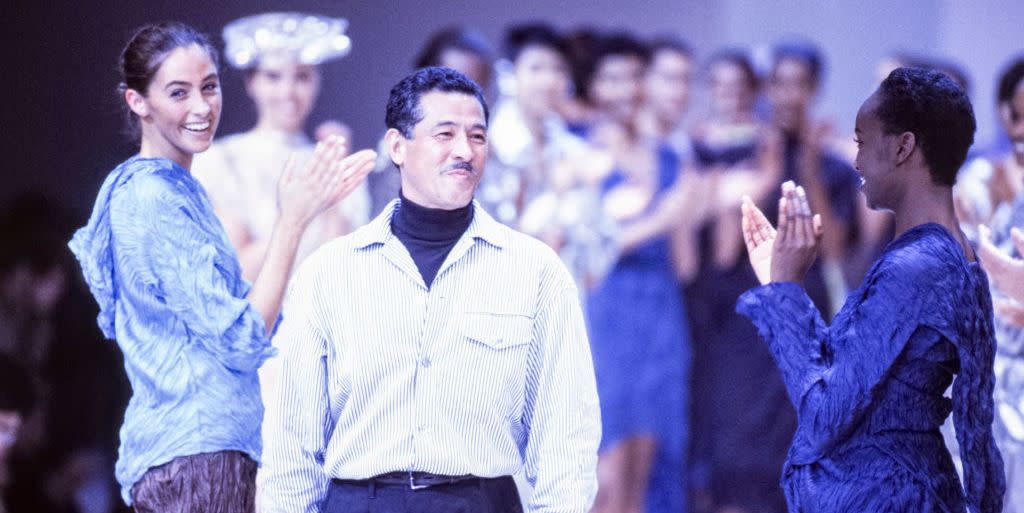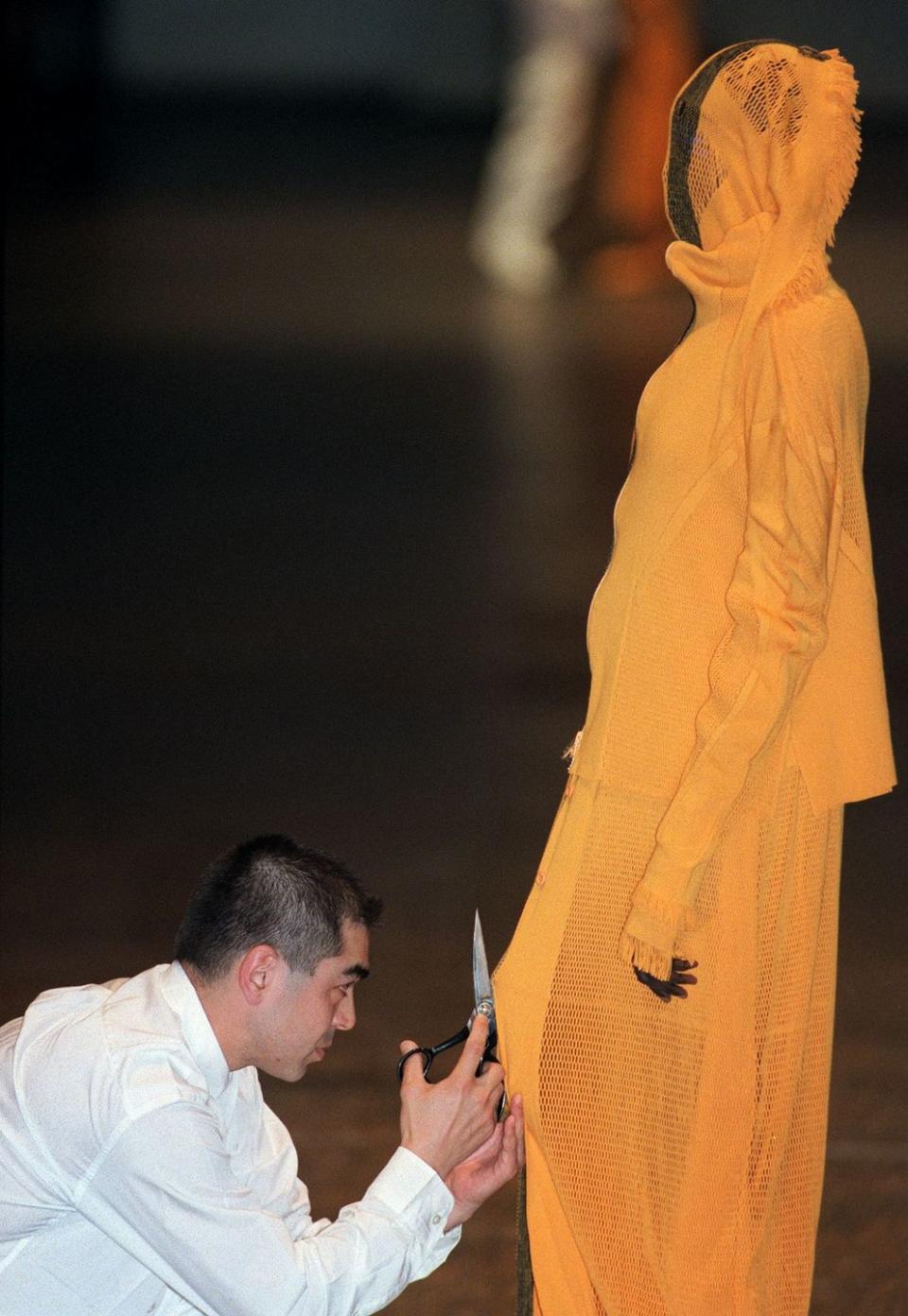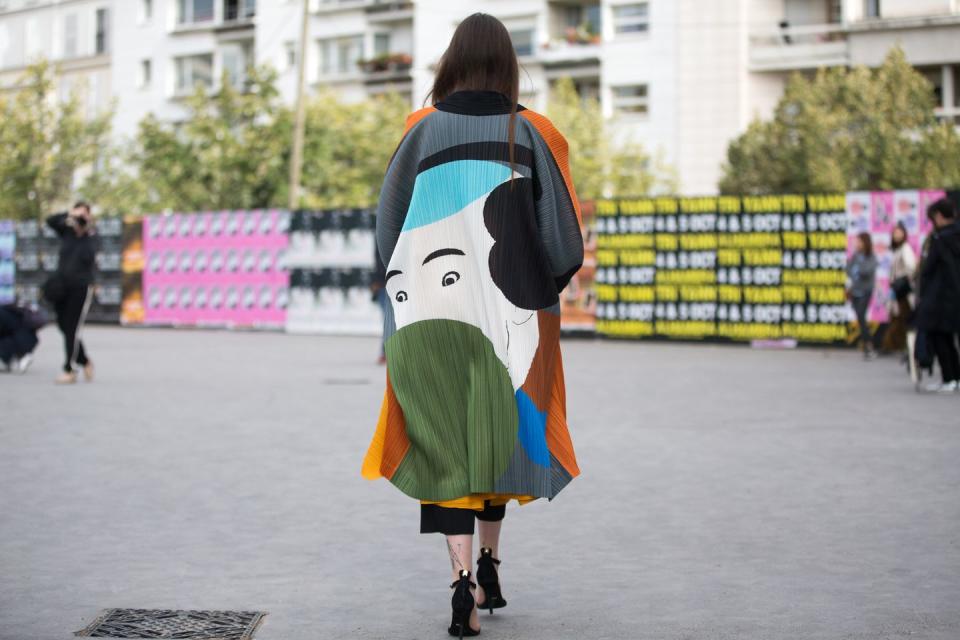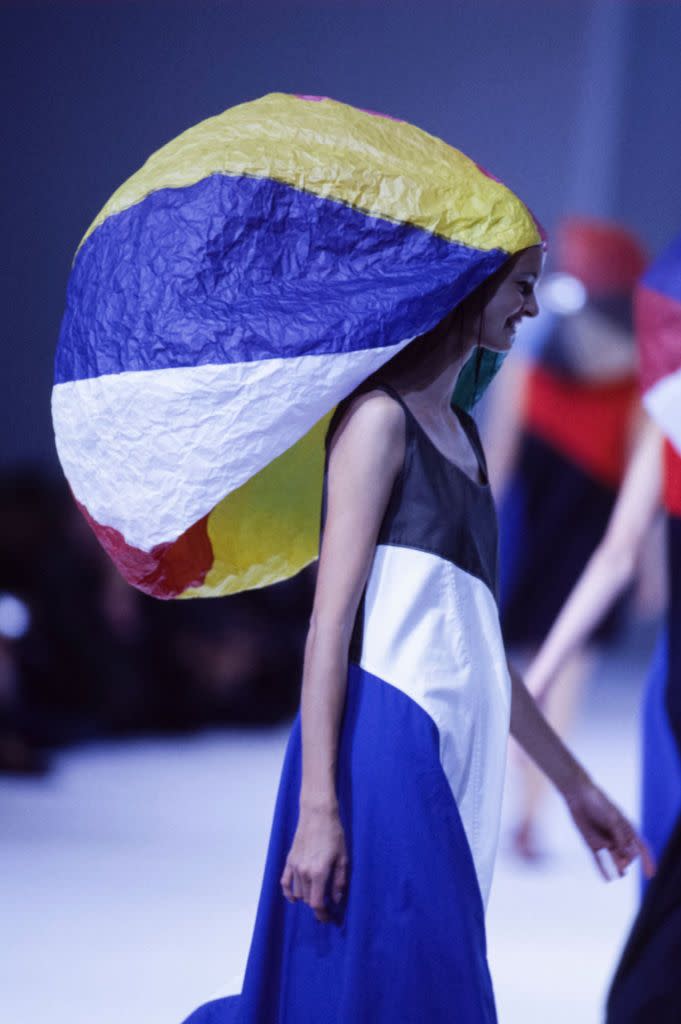Remembering Issey Miyake, Pioneer of the Nonconformist’s Uniform

In the early 1970s, European fashion reigned supreme. It wasn
’
t merely a given that France and Italy were the capitals of fashion—in fact, there was a belief, and not only in the country of origin, that real fashion, with emotion and sublime technique and otherworldly skill, came from Paris. The few designers from other countries who managed to be embraced by this scene, like the Japanese-born Kenzo Takada, found themselves in a scene in which clothes from the east were almost exclusively seen as exotic themes taken up seasonally by French minds.
And into this world came Issey Miyake, the groundbreaking Japanese designer who passed away last week at the age of 84. He founded his brand as the Miyake Design Studio at the outset of the 1970s and began showing in Paris a few years later, using his wild shapes and colors and sense of pleasure to rattle, and then reshape, what fashion could look like.
Miyake was deftly aware of the unquestioned hegemony of Paris fashion, and admired its sense of tradition, the rigidity of its system. But he thought obsessively, happily, about freedom, about what experimentation and even rebellion could invite. Japan had its own fashion traditions, of course, and the kimono would figure in Miyake’s work, but what Miyake sought was modernity. Clothing that spoke of the good of our world, the delights of the human body, the mischief of the human mind.
While Saint Laurent and Hubert de Givenchy were showing homages to art, literature, and 19th century society to an audience of jet setters, Miyake was showing what a buyer once called “flying-squirrel things,” with a number of holes that wearers could poke their head and limbs through in any combination. But as silly as the description may have been, his out-there designs found their source material in the jittering geometry of Alberto Giacometti and the sweet orbs of Constanin Brancusi.
Rather than fantasy, Miyake gravitated towards technical fabric innovations that yanked fashion, and even style, forward. His clothing was about movement, change, and excitement. Joy was his conviction. There was a constant sense of creation, even of conspiracy between wearer and garment: dresses oompah’d like jellyfish, jackets inflated, coats were covered in a zillion zippered pockets that turned the functional into something divinely decorative. The spirit in his clothing was boundless, in part because it came from a ceaseless need to invent.
Miyake didn’t seem to feel that a garment was complete when he finished working on it. To make it real, a piece of clothing needed the body inside: the air in the lungs blowing up the sleeves, the hands crumpling or twisting the hat. This wasn’t m evident in the fabrics or their feel, but the construction itself. He often strove to make his clothes from a single piece of fabric, and the resulting garments, draped and elegant and loose, gave their wearer even more determination over how they might look or feel.

Miyake was born in Hiroshima in 1938; his mother perished as a result of the atomic bombings in 1945. He studied graphic design in college, in Tokyo, and later, fashion in Paris, working for designers Guy Laroche and Hubert de Givenchy. A short stint in New York would be equally as informative, as he entrenched himself in the avant-garde art world of the late 1960s, a melding that would eventually influence his approach to sculpture-influenced fabric design. Throughout his life, he remained intensely private, rarely discussing his childhood or personal life; he died last Friday, at age 84, of liver cancer, and his survivors were not immediately known.
Instead of himself, Miyake focused on ideas, on a philosophy that insisted change—in fabric, and art, and life—could be inspiring. His equal fluency with art and fashion rivals perhaps only Elsa Schiaparelli and Miuccia Prada. Famously, a model in his red and black warrior-like ensemble appeared on one of the early issues in Ingrid Sischy’s radical tenure as the editor of Artforum, a gauntlet thrown to assert that fashion designers had as much to say about the world as artists.
In many ways, Miyake represented the meeting of oppositions: fashion and art. East and west. History and the future. The uniform and the nonconformist. Technology and emotion, the machine and the brain, beauty and practicality. It was not juxtapositions he sought, though, but a kind of kinky harmony that radiated warmth.

Still, perhaps Miyake’s greatest contribution was the tenacious wearability of his clothes—indeed, the wearability of his ideas. In the late 1980s, he introduced a reinvention of Mariano Fortuny’s famous tight accordion pleats, not solely as a nod to Classical Greek proportions of beauty and cerebral rigor, as Fortuny intended them, but as a strong, packable, live-in-able uniform. He pleated polyester fabrics before cutting them (traditionally, designers would pleat fabric after construction); because of the heated technique he used to create the folds, the pieces could be machine-washed without losing their shape. The garments could be as simple as a cap-sleeve T-shirt or as mesmerizingly complex as the Winchester Mystery House’s staircases. After patenting the pleating process in 1993, he spun the look off into its own line, Pleats Please, which has become in the decades since a uniform for iconoclasts, the creative class, and independent thinkers. The success of the plissé pieces is that their ease of wear—soft synthetic fabrics, forgiving folds, and elastic waists and enveloping shapes—is balanced by a sly strangeness of silhouettes and materials. To wear the pleats is to at once protect and announce yourself.

Other designers with a signature as recognizable as Miyake’s have faded from view; a special look or technique propels them to fame and then fashion’s whims punish them to irrelevance. Yet Miyake’s shapes, particularly his pleats, have stood the test of time; indeed, wearers often accessorize their colorful dresses or cropped trousers with the designer’s equally popular plated Bao Bao bags. His designs are almost like jeans and T-shirts for artists, architects, and celebrities or business people with a zany nucleus, like Robin Williams and Steve Jobs. Blythe Marks, a Los Angeles-based vintage seller who estimates that she owns “easily over 75” pieces of Miyake’s clothes, says his designs transformed the way a wearer thinks about their form. “He taught me how to go beyond my body by understanding its contours and then promptly obliterating any limits placed upon it by traditional western dressmaking standards. His pleats and folds made me feel totally free.” No other designer has for so long, for so many, been shorthand for creativity, freedom, and intellectual experimentation.
Clothing that enfolds the body, inviting the wearer to play, is Miyake’s legacy. It is seen everywhere from the work of his peers Yohji Yamamoto and Rei Kawakubo, who followed in his footsteps to Paris in the 1970s, to that of more recent talents like Simone Rocha, Jonathan Anderson, and Glenn Martens. His work stands for the possibilities of style through fabric, and how the eternal quest for invention is what makes us human.
You Might Also Like

